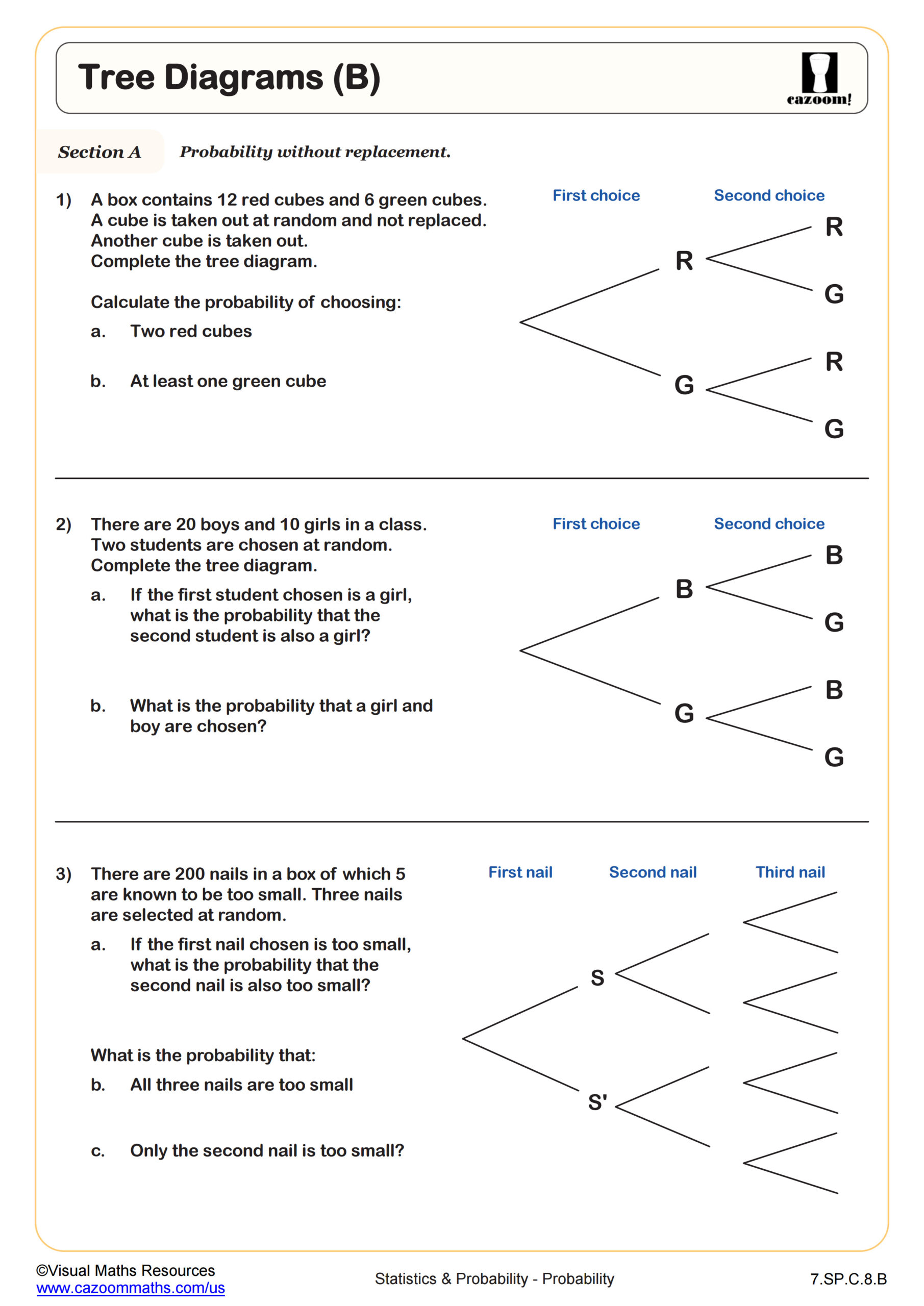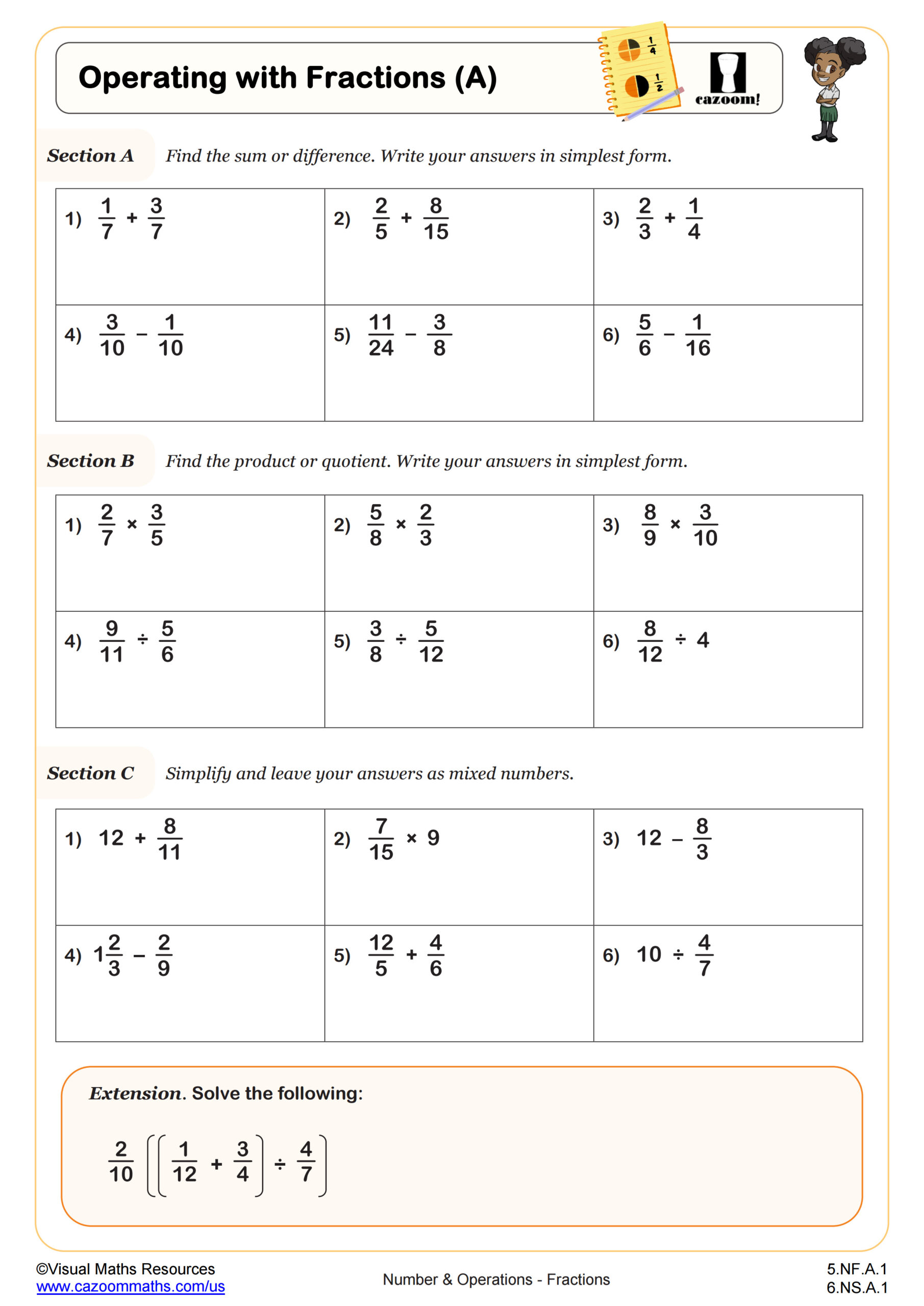Loading...
Back to:
Tree Diagrams (B) WORKSHEET
Suitable for Grades: 7th Grade
CCSS: 7.SP.C.8.B
CCSS Description: Find probabilities of compound events using organized lists, tables, tree diagrams, and simulation. a. Understand that, just as with simple events, the probability of a compound event is the fraction of outcomes in the sample space for which the compound event occurs. b. Represent sample spaces for compound events using methods such as organized lists, tables and tree diagrams. For an event described in everyday language (e.g., “rolling double sixes”), identify the outcomes in the sample space which compose the event. c. Design and use a simulation to generate frequencies for compound events. For example, use random digits as a simulation tool to approximate the answer to the question: If 40% of donors have type A blood, what is the probability that it will take at least 4 donors to find one with type A blood?
Tree Diagrams (B) WORKSHEET DESCRIPTION
This assignment will enable students to use tree diagrams to systematically list possible outcomes and calculate probabilities of multiple dependent events.
In section A, students will complete three tree diagrams, the branches for which are provided, and calculate probabilities from them for three scenarios without replacement. In section B, students will draw their own tree diagrams for three scenarios of conditional events and then use them to calculate probabilities.
Learners will be required to operate with fractions and decimals. Calculators can be used at teacher/parent discretion; however, students are required to calculate these probabilities without the use of a calculator.




